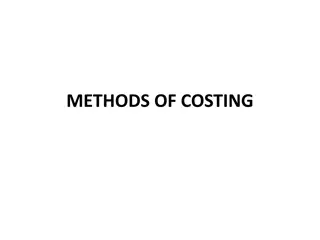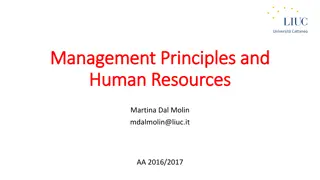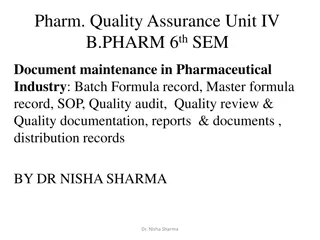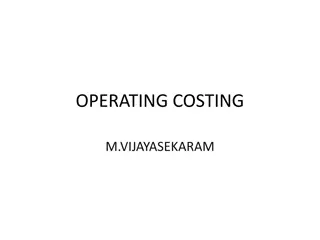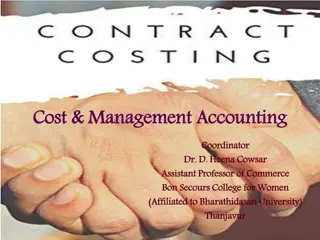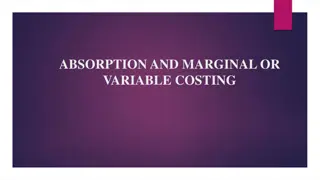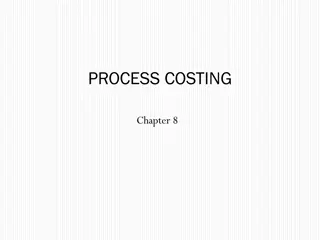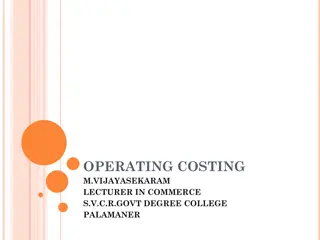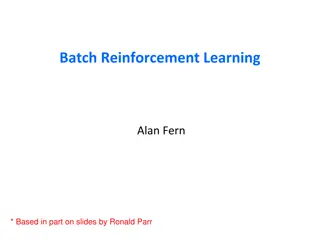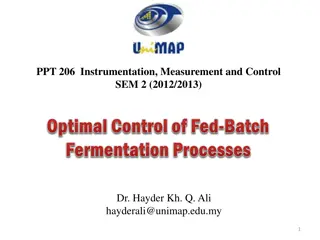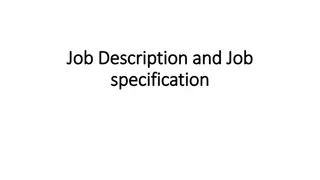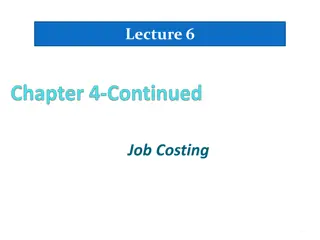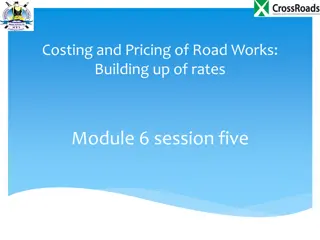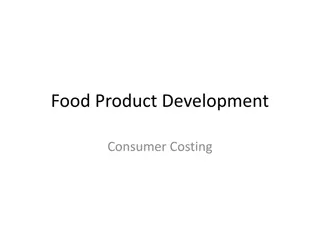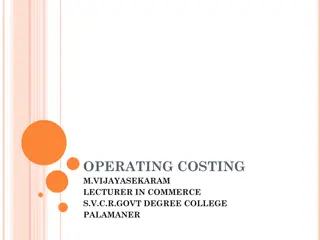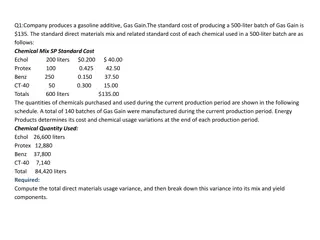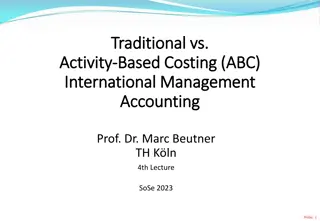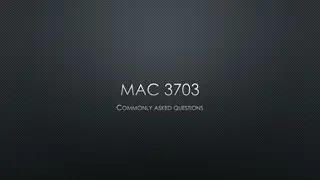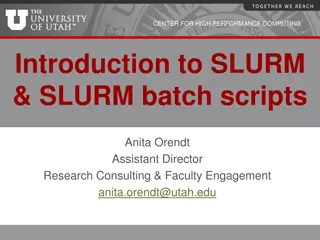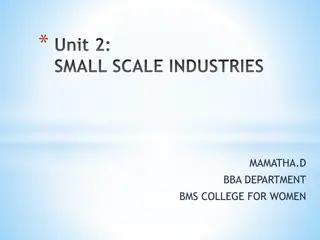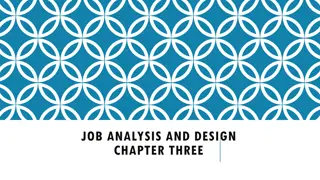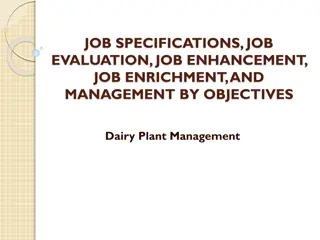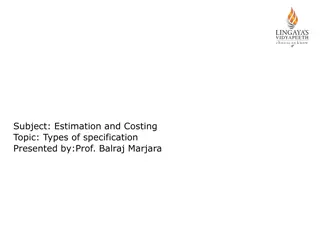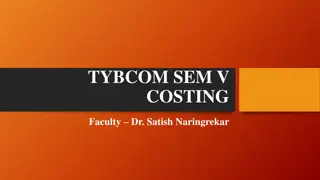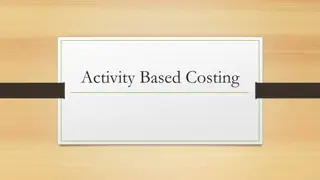Understanding Job and Batch Costing in Industries
Job and Batch Costing are methods used in industries to ascertain the cost of specific jobs or batches separately. Job Costing is ideal for dissimilar or non-repetitive industries, while Batch Costing treats each batch as a cost unit. Both methods help in cost analysis, profitability assessment, and future production planning. However, they also come with limitations such as excessive clerical work and historical cost nature. Economic Batch Quantity (EBQ) is crucial in Batch Costing to determine the optimum production quantity for minimal costs.
Download Presentation

Please find below an Image/Link to download the presentation.
The content on the website is provided AS IS for your information and personal use only. It may not be sold, licensed, or shared on other websites without obtaining consent from the author. Download presentation by click this link. If you encounter any issues during the download, it is possible that the publisher has removed the file from their server.
E N D
Presentation Transcript
Job Costing Job costing is a method of cost ascertainment used in job order industries. Job Costing is a method of finding the cost of specific job or work order separately. A job constitutes the unit of costing. It is used in industries where jobs are dissimilar or non-repetitive. Ex: Printing Press, Cycle factory, production of spare parts etc. Special features 'of such industries are as follows: a. Production is against customer s orders and not for stocks. b. Each job has its own characteristics and requires special attention. c. The flow of production from one department to another is not uniform. It is the nature of job which determines the department through which it is to be processed.
Objectives of Job Costing Cost of each job or order is ascertained separately. This helps in finding out the profit / loss of each individual job. It enables management to detect those jobs which are more profitable and those which are unprofitable. It provides a basis for determining cost of similar jobs undertaken in future. Thus, it helps in future production planning. It helps management in controlling costs by comparing the actual costs with the estimated costs. Advantages: Helps in knowing profitability of each job. it collects & analyses costs by elements, functions, jobs. This provides sufficient cost data for preparing cost estimates and quotations. Facilitates cost control by enabling comparison of actual costs with estimated costs. Spoilage and defective work can be identified with a specific job & responsibility for the same may be fixed on individuals.
Limitations: It involves excessive clerical work and paper work. It is expensive as cost is ascertained for each job separately. The costs, being historical in nature, do not enable prompt remedial action.
Batch Costing Meaning: Batch Costing is that form of specific order costing under which each Batch is treated as a cost unit and costs are accumulated and ascertained separately for each Batch. Each Batch consists of a number of like units. Basic Features: Each Butch is treated as a cost unit. All costs are accumulated and ascertained for each batch. A separate Batch Cost sheet is used for each batch and is assigned a certain number. The cost per unit is ascertained by dividing the total cost of each batch by the number of items produced in that batch. Batch Costing is applied in those industries where the similar articles are produced in definite batches for internal consumption or for sale to customers. It is generally applied in Readymade Garments Industry. Pharmaceutical Industry. Spare parts producing industry. Toys Manufacturing.
Economic Batch Quantity (EBQ) In industries where Batch Costing method is used, production is usually done in batches and each batch can have any number of units of component in it. The optimum quantity for a batch is that quantity for which the setting up and carrying costs are minimum. Such an optimum quantity is known as Economic Batch Quantity. EBQ refers to the optimum quantity batch which should be produced at a point of time so that the set up & processing costs and carrying costs are together optimized. EBQ is determined by two conflicting forces. Set-up costs Carrying costs EBQ is equilibrium between these two forces. It is the quantity of production where maximum benefit accrues.
Set up cost: It refers to the costs incurred for setting up and processing operations before the start of production of a batch. It includes tools & machine set-up cost, preparation cost, time lost during change from batch to batch, loss of speed of workers due to too frequent changes of work, increased supervision cost. There is inverse relationship between Batch size & setup costs. Larger the size of the Batch -Lower the setup costs because of lesser number of batches. Smaller the size of the Batch - Higher will be the setup cost because of more batches. Carrying Cost: It refers to the costs incurred in maintaining a given level of inventory. There is positive relationship between batch size and carrying cost. Larger the Batch Size -Higher the carrying cost. Smaller the Batch Size -Lower the carrying cost. Formula to calculate EBQ EBQ = 2AS A = Annual Demand C S= Set up cost per Batch C = Carrying cost per Batch


